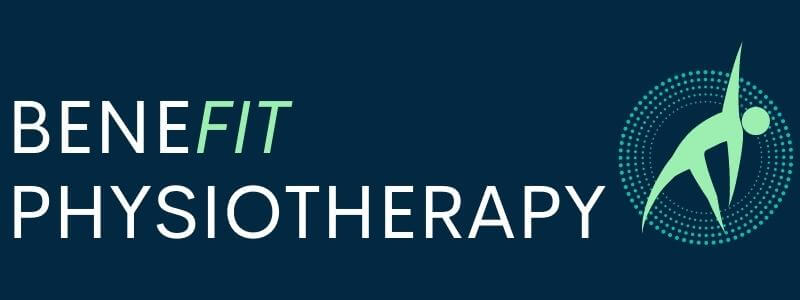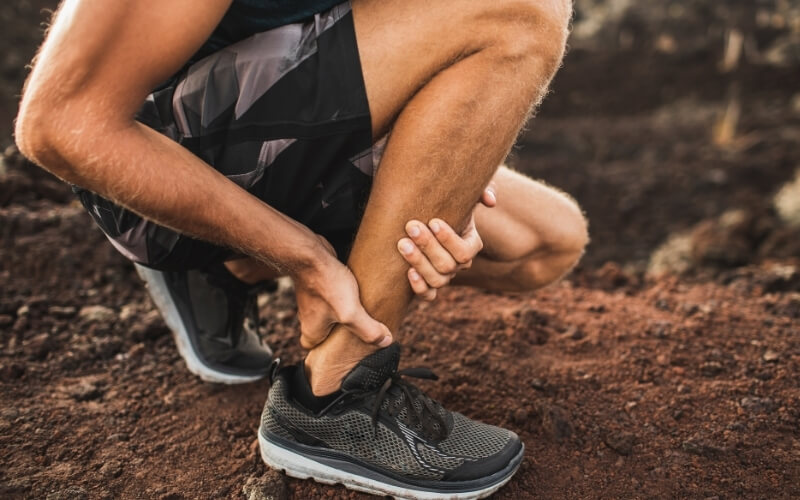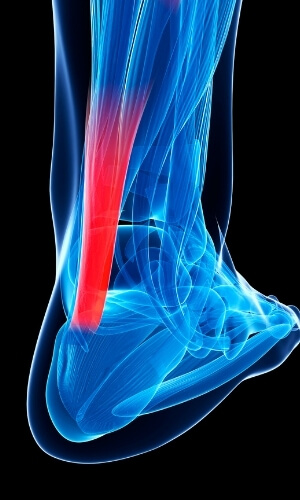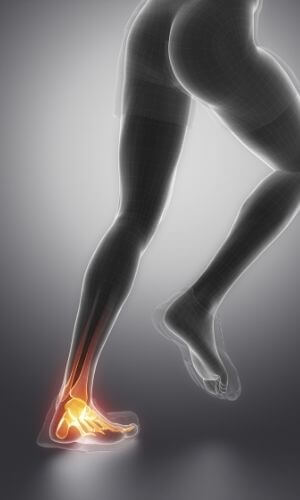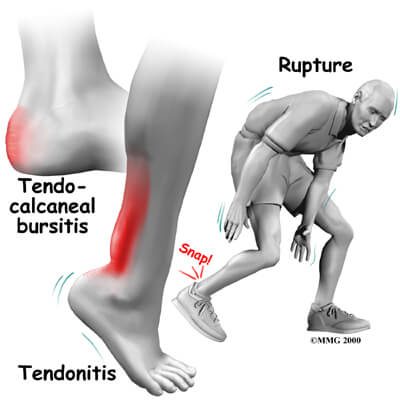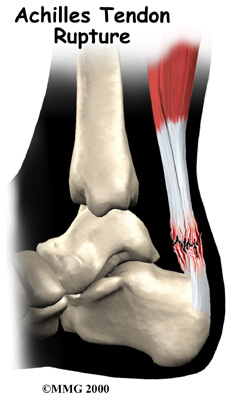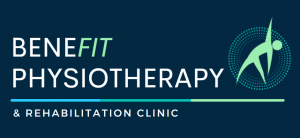Achilles tendon pain is a very common problem among athletes. It mostly occurs when there is a strain or sudden increase in load demands placed on the Achilles tendon.
We see a lot of these injuries after the City-to-Surf or after “New Years Resolutions” because people are drastically increasing their level of exercise.
How The Achilles Tendon Works
Tendons connect muscles to bones. They have a unique and complex tissue structure which allows the tendon to stretch and contract as we exercise.
The Achilles tendon in particular connects the calf muscles to the heel bone. This connection between the muscle and bone allows the calf muscle to control movement at the ankle when we walk, run or jump.
Excessive amounts of this type of exercise puts repetitive strain on the tendon and causes a breakdown of the tendon structure. This leads to a weakened tendon which can then lead to pain.
Achilles tendon pain is usually divided into two types:
- Midportion tendinopathy: the pain located at the centre of the tendon
- Insertional tendinopathy: the pain is located where the tendon inserts at the heel bone
Although Achilles tendinopathy is the most common source of Achilles pain, other conditions do exist which can replicate this type of pain.
These conditions include:
- Achilles Paratendinitis
- Retrocalcaneal Bursitis
- Superficial Calcaneal Bursitis
- Severs Disease.
It’s important to have your physiotherapist assess your injury to make an accurate diagnosis and avoid further aggravation.
What To Expect With Achilles Tendon Pain?
Achilles tendon pain has a funny way of working. The pain will be inconsistent and will vary from person to person.
You may experience pain first thing in the morning and then after 5-minutes of moving around that pain will disappear for the rest of the day. You might not feel the pain during the day at all but when you start exercising the pain is immediate. Some people find that walking barefoot is the trigger of their tendon pain.
The triggers of your tendon pain are all clues for how severe the injury is and what you need to do to resolve the problem. For these injuries, you can’t apply the same treatment to every person and expect the same result.
You should have a physiotherapist assess your injury within the context of your lifestyle to achieve the best long-term results for your tendon.
Tendons are typically difficult injuries to deal with. They have a unique tissue structure and often our intuition fails us. They might feel better with rest, but ultimately the tendon won’t heal when it’s rested and the pain will come back once provoked.
Tendinopathies are often chronic injuries and it’s not uncommon for a tendon injury to last for months or even years.
Here are some common mistakes that people make with Achilles tendinopathy.
Resting The Tendon
Let me clarify. There needs to be a balance.
As mentioned above, tendon injuries are a result of an overload. You need to remove this excessive load to reduce stress on the Achilles tendon but you should not completely stop your activity.
Tendons subscribe to the ‘use it or lose it’ philosophy. But this doesn’t mean you should ignore the pain.
The best method is to reduce your load and then slowly increase it again in a way that doesn’t cause pain. You may need to stop your sport to reduce the tendon load.
Not Doing The Simple Things
Using short-term pain relief can significantly improve your tendon pain. Simple things like ice packs, anti-inflammatory creams or heel lifts can help alleviate your pain.
They won’t fix the problem, but they can give short-term relief to what is likely going to be a long-term problem.
Starting With Injections
Injection therapies do have some merit in the process of tendon rehabilitation. However, these need to be used alongside exercises prescribed by the physiotherapist in order to get the best results for your tendon.
These methods don’t repair the tendon but give a platform to continue exercise in the tendon repair process. Injectables should only be used after other treatment options have been exhausted.
Although some injectables do effectively relieve pain, it can lead to an overall weakened tendon structure and more chronic issues in the future.
Stretching The Tendon
Tendons don’t like to be stretched. It puts more pressure on the tendon and can stress the attachment of the tendon to the bone. If you feel that your muscles are tight try massage, foam rolling or trigger ball releases instead.
Listen To Your Body
Pain is the best indication of an overloaded tendon. However, the tendon doesn’t always communicate during your exercise.
You should monitor for tendon pain during exercise, immediately following exercise, and for 48-hours after you complete exercise. If you experience pain in the tendon at any of these moments the tendon has been overloaded.
Worrying About Your Scan
Over-reliance on scan results is a common mistake in tendon injuries. Scans might show a degenerative tendon, tendon fraying, or even a tendon tear. But they can’t show you how the tendon performs under load. Even damaged tendons are capable of withstanding heavy loads.
Not Understanding Your Tendon
Tendon load is relative and overload will mean different things depending of your level of athleticism.
For example, a marathon runner’s load is much different to a lawn bowls athlete. It’s important to understand what your tendon likes and (more importantly) doesn’t like so that you can avoid further aggravation.
What’s the difference between tendinopathy, tendinitis and tendinosis?
Technically the difference between tendinitis and tendinosis is inflammation.
Tendonitis refers to degeneration of the tendon where there is inflammation involved in the tendon. A tendinosis on the other hand has no inflammation involved.
There has been ongoing debate amongst researchers as to whether there is actually inflammation involved in our tendon pain. Although this may be important to further progress our understanding of tendon pain and guide future treatments, it a technicality that doesn’t make much difference to us now.
Tendinopathy is an umbrella term which relates to any problem or injury related to the tendon. This means that a tendinopathy could be either a tendonitis or tendinosis.
Summary
Achilles tendons are complex tissues that are often a source of chronic pain. Have your injury assessed by your physiotherapist to ensure you get the most effective treatment and avoid long-term problems.
One-on-One Physiotherapy Care - Complete Attention - You Deserve It !
Contact Us today to find out how we can help you.
